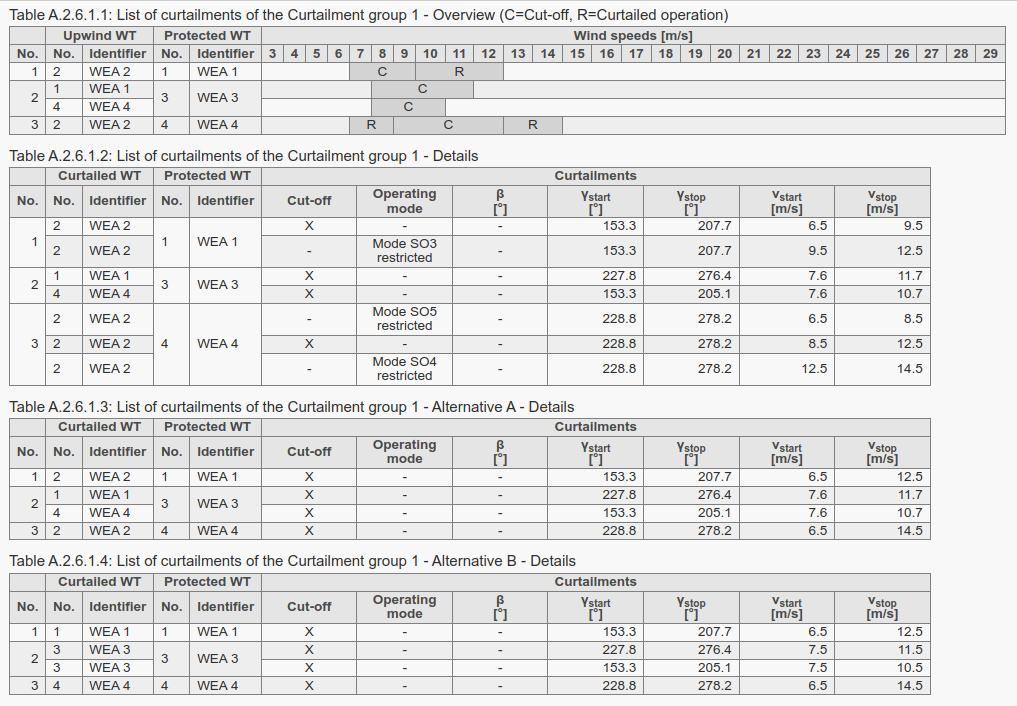In the latest release 3.11-27 wake2e offers an improved approach for the assessment of the topographic complexity as well as a new compact overview of the sometimes complicated project's operating restrictions in the PDF report.
Improved calculation of site suitability at complex sites
Users of wake2e who tend to plan in the south of Germany and in mountainous terrain may have noticed in the past that their results sometimes differ from our calculations. This is because we relied on the IEC 61400-1 Edition 4 orographic complexity assessment for these complex sites. Since we ourselves worked on this part of the standard at the time, we know the advantages of this procedure very well. Even though the DIBt guideline for wind turbines still explicitly refers to the old version of IEC 61400-1, we are now introducing this procedure as a standard in wake2e. This is also associated with a changeover to the higher-resolution SRTM height data. Also the evaluation of the flow inclination is now done according to the specifications of the current IEC 61400-1.
We hope that the new version will make planning in topographically challenging terrain at least somewhat easier and look forward to many new projects.
Overview of operating restrictions in PDF report
Almost all users of wake2e are confronted with the close spacing of turbines in wind farms and the associated operational restrictions. Since we always strive to find the minimum variant for these restrictions, complicated direction- and wind speed-dependent solutions quickly arise, of which there are often several variants.
The numerical representation in the PDF report then becomes extensive and complex. We have therefore prefixed the operating restrictions in the PDF report with an overview that is based on the familiar representation of operating restrictions in the wake2e web interface.
In addition to faster recording of the necessary operating restrictions, this will hopefully also facilitate communication with authorities and other project participants in the future.
The figure below shows an operating restriction group with alternative operating restrictions and the new preceding overview table.
